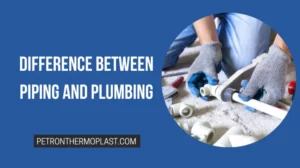In the realm of plumbing and pipeline systems, UPVC couplers stand out as crucial components that ensure seamless connections, efficient flow, and overall system integrity. These unassuming devices play a pivotal role in joining pipes of varying diameters, materials, or configurations, thereby enabling a network of pipes to function harmoniously. In this comprehensive guide, we delve into the world of UPVC couplers, exploring their types, applications, benefits, and the key considerations when selecting the appropriate coupler for a specific plumbing task.
Understanding UPVC Couplers
UPVC couplers, also known as Unplasticized Polyvinyl Chloride couplers, are specialized fittings designed to connect two sections of UPVC pipes together. UPVC, a highly durable and rigid material, makes these couplers robust and resistant to a wide range of environmental and chemical factors, rendering them ideal for diverse plumbing applications.
Types of UPVC Couplers
1. Slip Couplers
Slip couplers, often referred to as repair couplers, are utilized when a damaged section of a pipe needs replacement without altering the entire pipeline. These couplers consist of two parts that can be separated, allowing easy installation without the need to disassemble the entire system. Slip couplers are particularly beneficial in time-sensitive situations where minimal disruption is desired.
2. Compression Couplers
Compression couplers employ a unique mechanism to connect pipes without the need for adhesive or welding. They comprise a compression ring, threaded nut, and gasket, ensuring a secure and leak-proof connection. These couplers are particularly useful when connecting pipes of different materials or sizes, offering versatility and ease of installation.
3. Barbed Couplers
Barbed couplers are designed for flexible and low-pressure systems. They feature barbed edges that grip onto the inner walls of the pipes when secured with clamps. These couplers are commonly used in irrigation and landscaping applications, where maintaining a leak-free connection is essential.
4. Threaded Couplers
Used primarily for pipes carrying fluids under high pressure, threaded couplers boast a threaded interior that enables a strong and secure connection. These couplers often require the application of thread sealant to ensure a watertight joint. They find application in pressurized water supply lines and industrial pipelines.
5. Lap Joint Couplers
Lap joint couplers, also known as flanged couplers, are ideal for systems that require periodic disassembly. These couplers consist of two machined parts: a stub end and a lap joint flange. The stub end is welded to the pipe, while the flange remains free to rotate, facilitating easy alignment during reassembly.
Applications of UPVC Couplers
The versatility of UPVC couplers lends itself to a wide array of applications across various industries:
- Plumbing: UPVC couplers find extensive use in domestic and commercial plumbing systems, connecting pipes in water supply, drainage, and sewage systems.
- Irrigation: The dependable connection provided by UPVC couplers ensures efficient water distribution in agricultural and landscaping irrigation systems.
- Chemical Transport: The chemical resistance of UPVC makes it suitable for connecting pipes that transport various chemicals and corrosive substances.
- Industrial Pipelines: In industrial settings, UPVC couplers are employed to link pipes in processes involving chemicals, acids, alkalis, and other aggressive fluids.
- Pool and Spa Systems: UPVC couplers contribute to the smooth operation of pool and spa circulation systems, even in the presence of chlorine and other pool chemicals.
Benefits of Using UPVC Couplers
- Corrosion Resistance: UPVC couplers excel in resisting corrosion, ensuring a longer lifespan in corrosive environments compared to metal alternatives.
- Chemical Resistance: The inherent resistance of UPVC to a wide range of chemicals makes it an excellent choice for transporting various fluids, even in demanding industrial settings.
- Ease of Installation: The diverse range of coupling methods available, from slip couplers to threaded ones, offers straightforward installation options suitable for different situations.
- Durability: UPVC’s robust nature ensures that couplers made from this material are capable of withstanding high pressures and mechanical stress.
- Cost-Effectiveness: UPVC couplers often present a more economical option in comparison to couplers made from other materials, without compromising on quality.
Key Considerations When Selecting UPVC Couplers
- Application: Different applications require specific types of couplers. Understanding the system’s purpose is essential for choosing the right coupler type.
- Pipe Diameter and Material: The compatibility of the coupler with the pipe’s diameter and material should be verified to ensure a secure fit.
- Operating Conditions: Consider factors such as temperature, pressure, and the types of fluids being transported. Some conditions might necessitate specialized couplers for optimal performance.
- Installation Method: Depending on the situation, some couplers might be easier to install than others. Consider the available tools and expertise for installation.
- Longevity: For long-term applications, choosing high-quality UPVC couplers ensures extended service life and minimizes the need for frequent replacements.
In Conclusion
UPVC couplers undeniably play a vital role in the seamless operation of pipelines across a diverse range of applications. Their ability to connect pipes reliably, even under challenging conditions, highlights their significance in modern plumbing and industrial systems. As technology continues to advance, we can expect further innovations in the realm of UPVC couplers, enhancing their performance, durability, and application possibilities. Whether in a household plumbing network or an industrial pipeline framework, the unassuming UPVC coupler keeps fluids flowing and systems functioning, silently ensuring efficiency and reliability.




